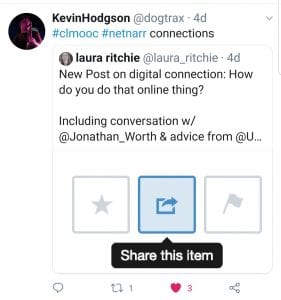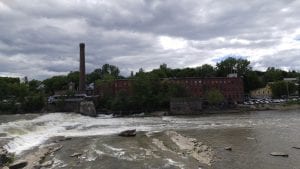Communities, connections, and storytelling
My (virtual) colleague Kevin Hodgson alerted me to this #netnarr post by Laura Ritchie, in which Laura asks and seeks to answer the question, “How do we connect with the wider community across the globe?” I was fascinated by Jonathan Worth’s responses to Laura’s questions, as he analyzes online networks and communities.
I was particularly struck by Jonathan’s statement that “everyone’s got a story, you’ve just got to enable them to tell it.” This reminded me of ethnographic research I conducted as part of the 2017 Community Works Institute. We spent one afternoon strolling through the compact Vermont town of Winooski, once home to thriving woolen mills. After the mills closed in the mid-1950s, the town saw an economic decline for two decades. In the 1980s, the mills were converted to commercial and residential spaces, which helped revitalize the town.
The most startling trivia about Winooski is that in 1980 there was serious consideration of covering the town in a geodesic dome to make winters more tolerable for the residents! I doubt I would have ever stumbled across this fascinating information without engaging in this walkabout.
As we sauntered through the town, we observed, remarked upon, and snapped photos of the various architectural styles. We loitered in the community center, seeking to understand the “vibe” and interests of the town. We entered various shops and gathered stories from the shopkeepers. We talked to people on the streets. Some were residents, some were visiting from elsewhere.
One of the questions our facilitator asked after we reconvened was, “How did you reciprocate with the people who answered your questions?” The answer was simple, and a bit of an ah-ha for me, “By listening to their stories.”
The importance of storytelling within communities is summarized in this 2017 Time magazine article. A study that was done among a hunter-gatherer population in the Philippines concluded that “‘[s]torytelling is a costly behavior… requiring an input of time and energy into practice, performance and cognitive processing.’ But the payoff for making such an effort is big: When the investigators looked at family groups within the 18 camps, they found that skilled storytellers had, on average, .53 more living children than other people.”
Everyone’s got a story, you’ve just got to enable them to tell it. ~ Jonathan Worth
We all have stories to tell. One of the best ways we can honor our students and build trust with them is by actively seeking to hear and understand their stories.

